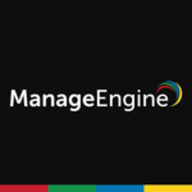


Microsoft Defender for Cloud and ManageEngine Vulnerability Manager Plus are two contenders in the cybersecurity sector. Microsoft Defender for Cloud is preferred for its superior integration within Microsoft environments, while ManageEngine Vulnerability Manager Plus is favored for its comprehensive features and economical pricing.
Features: Microsoft Defender for Cloud offers seamless integration with Microsoft services, robust security monitoring, and excellent threat intelligence. ManageEngine Vulnerability Manager Plus provides extensive vulnerability assessments, asset discovery, and detailed risk analysis. ManageEngine's focus on comprehensive vulnerability management is valued by users.
Ease of Deployment and Customer Service: ManageEngine Vulnerability Manager Plus ensures an easy deployment process and has commendable customer support available through multiple channels. Microsoft Defender for Cloud enjoys smooth integration within Microsoft frameworks but receives mixed reviews on its customer support responsiveness. ManageEngine's deployment support is more favorable.
Pricing and ROI: Microsoft Defender for Cloud incurs higher initial costs, offering significant value through integration benefits, leading to a positive ROI for businesses aligned with Microsoft ecosystems. ManageEngine Vulnerability Manager Plus is competitively priced, providing a faster ROI due to its rich features and cost-effectiveness. It is preferred for its budget-friendly pricing structure, whereas Microsoft Defender justifies its higher cost through enhanced integration.
| Product | Market Share (%) |
|---|---|
| Microsoft Defender for Cloud | 5.3% |
| Zafran Security | 1.0% |
| ManageEngine Vulnerability Manager Plus | 1.0% |
| Other | 92.7% |


| Company Size | Count |
|---|---|
| Small Business | 26 |
| Midsize Enterprise | 8 |
| Large Enterprise | 44 |
Zafran Security integrates with existing security tools to identify and mitigate vulnerabilities effectively, proving that most critical vulnerabilities are not exploitable, optimizing threat management.
Zafran Security introduces an innovative operating model for managing security threats and vulnerabilities. By leveraging the threat exposure management platform, it pinpoints and prioritizes exploitable vulnerabilities, reducing risk through immediate remediation. This platform enhances your hybrid cloud security by normalizing vulnerability signals and integrating specific IT context data, such as CVE runtime presence and internet asset reachability, into its analysis. No longer reliant on patch windows, Zafran Security allows you to manage risks actively.
What are the key features of Zafran Security?
What benefits can users expect from Zafran Security?
In industries where security is paramount, such as finance and healthcare, Zafran Security provides invaluable protection by ensuring that only exploitable vulnerabilities are addressed. It allows entities to maintain robust security measures while allocating resources efficiently, fitting seamlessly into existing security strategies.
Microsoft Defender for Cloud is a comprehensive security solution that provides advanced threat protection for cloud workloads. It offers real-time visibility into the security posture of cloud environments, enabling organizations to quickly identify and respond to potential threats. With its advanced machine learning capabilities, Microsoft Defender for Cloud can detect and block sophisticated attacks, including zero-day exploits and fileless malware.
The solution also provides automated remediation capabilities, allowing security teams to quickly and easily respond to security incidents. With Microsoft Defender for Cloud, organizations can ensure the security and compliance of their cloud workloads, while reducing the burden on their security teams.
We monitor all Vulnerability Management reviews to prevent fraudulent reviews and keep review quality high. We do not post reviews by company employees or direct competitors. We validate each review for authenticity via cross-reference with LinkedIn, and personal follow-up with the reviewer when necessary.